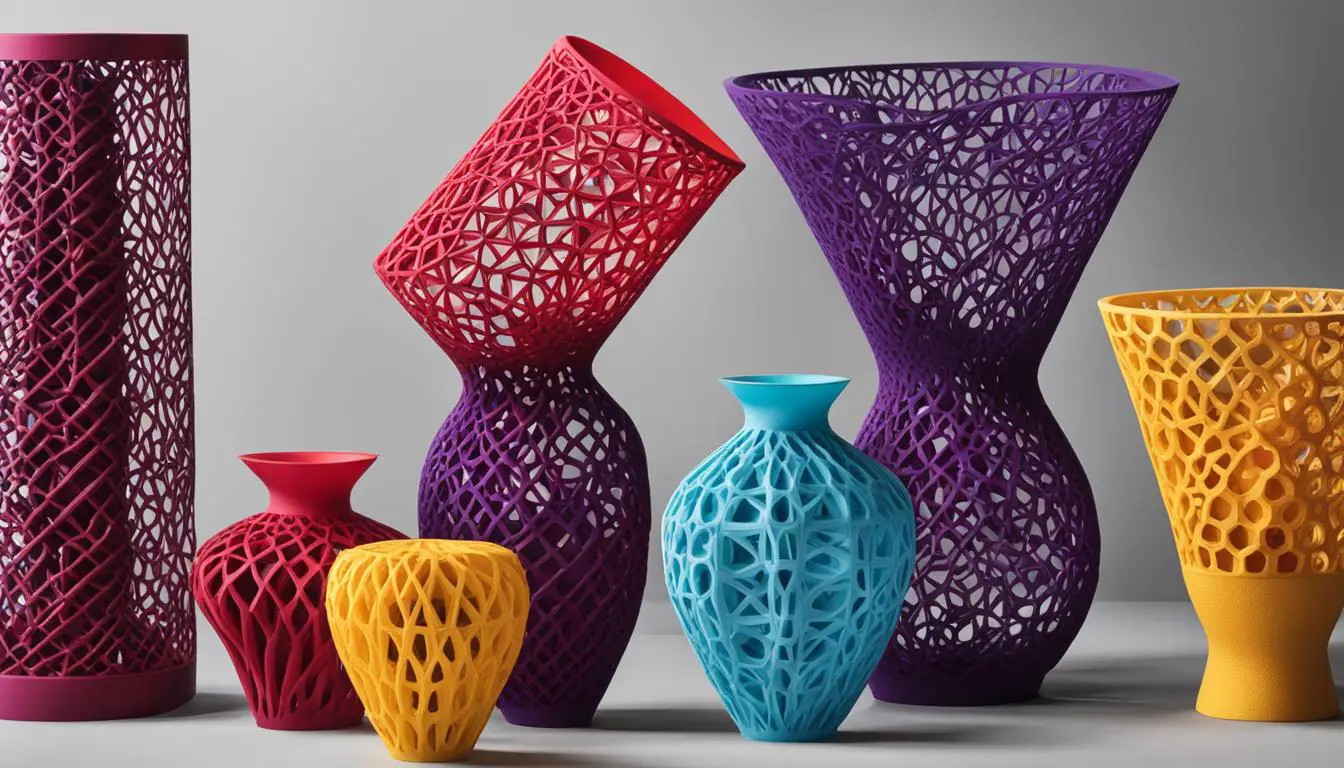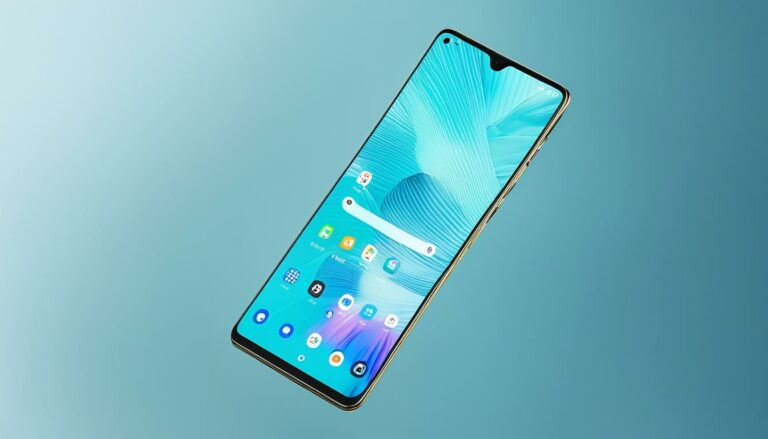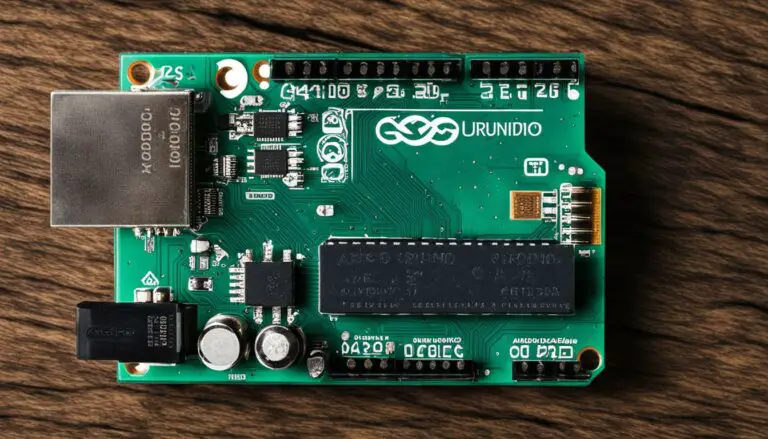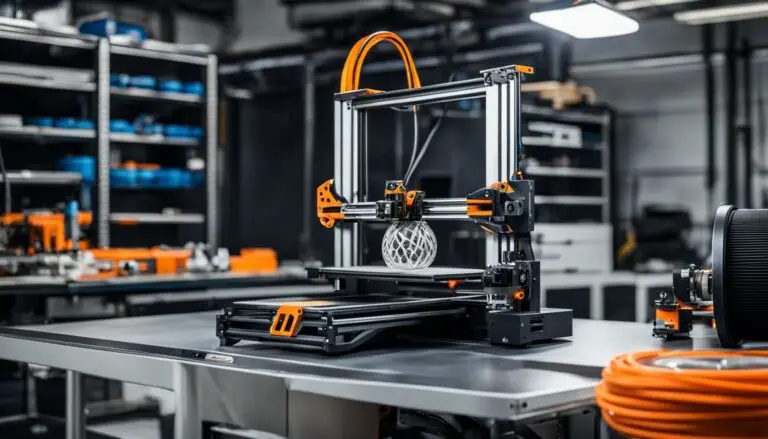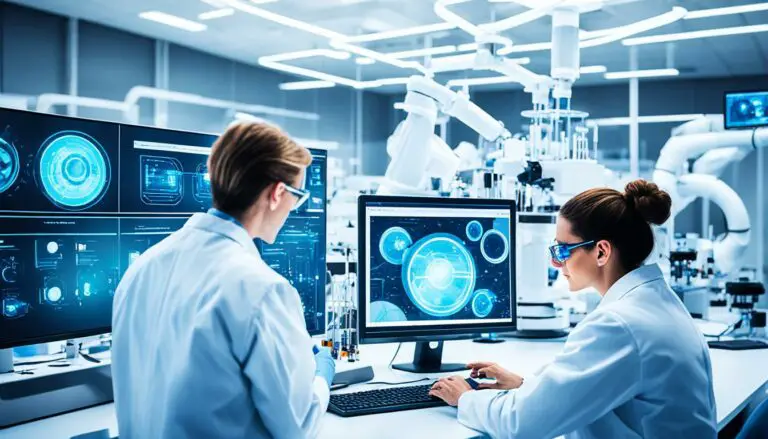Cool 3D Printed Things Vs Others: A Detailed Comparison
Originally posted on December 10, 2023 @ 1:26 am
This piece discusses exciting creations made using 3D printing and examines the differences between resin and filament 3D printing, two commonly used techniques. If you’re intrigued by one-of-a-kind 3D designs, personalized 3D items, and groundbreaking 3D printing technology, then you’ve come to the right spot.
At Print Chomp, we pride ourselves on providing practical tips, in-depth reviews, and unbiased information. Our articles are backed by rigorous testing and research, ensuring that you receive the most accurate and reliable content.
Key Takeaways:
- Resin 3D printing and filament 3D printing are two popular methods for creating cool 3D printed things.
- Resin 3D printing offers high resolution, a wide range of materials, and water-resistant prints.
- Filament 3D printing provides versatility, accessibility, and durability.
- When comparing resin and filament printing, consider factors such as cost, quality, ease of use, durability, build volume, print speed, and surface finish.
- There is no inherently superior method, and the right choice depends on your specific needs and applications.
What is Resin 3D Printing?
Resin 3D printing, also known as stereolithography (SLA) or digital light processing (DLP), is a cutting-edge technology that offers high-resolution 3D printing with a wide range of materials. Unlike filament 3D printing, which uses a spool of plastic filament, resin 3D printing utilizes liquid photopolymer resin that hardens when exposed to specific wavelengths of light. This process allows for the creation of intricate, detailed prints with unparalleled surface quality.
One of the key advantages of resin 3D printing is its ability to produce prints with exceptional accuracy and fine details. This makes it ideal for applications that require precise dimensions and intricate designs, such as jewelry, miniatures, dental models, and engineering prototypes. Resin 3D printers also offer a wide range of materials to choose from, including translucent, opaque, flexible, and high-temperature resistant resins, allowing for greater versatility in creating customized objects.
Additionally, resin prints are known for their water-resistant properties, making them suitable for applications that require exposure to moisture or liquid environments. The surface quality of resin prints remains unaffected by the printing process, resulting in smooth and flawless finishes straight from the printer. However, it’s important to note that resin 3D printing has some drawbacks, including limited printing size, toxic fumes emitted during printing, messy and time-consuming post-processing, and limited shelf-life of the resin.

Table: A Comparison of Resin 3D Printing and Filament 3D Printing
| Factors | Resin 3D Printing | Filament 3D Printing |
|---|---|---|
| Print Quality | High resolution, exceptional detail | Visible layer lines, lower detail |
| Material Versatility | Wide range of resins available | Limited to types of filament |
| Printing Size | Limited build volume | Large build volume |
| Print Speed | Slower than filament printing | Faster compared to resin printing |
| Post-processing | Messy and time-consuming | Less post-processing required |
| Shelf-life | Resin has a limited shelf-life | Filament has a longer shelf-life |
When considering resin 3D printing, it’s important to weigh the pros and cons, as well as its suitability for your specific needs. While it offers exceptional print quality and a wide range of materials, the limited printing size and post-processing requirements may present challenges for certain projects. However, if you require high-resolution, detailed prints with impeccable surface quality, resin 3D printing is the way to go.
Continue reading the article to learn more about filament 3D printing and how it compares to resin 3D printing in terms of cost, quality, ease of use, durability, build volume, print speed, and surface finish.
What is Filament 3D Printing?
Filament 3D printing, also known as Fused Deposition Modeling (FDM), is a widely used additive manufacturing technique. It involves melting a thermoplastic filament and depositing it layer by layer to create a three-dimensional object. This process is facilitated by a 3D printer that follows a specific pattern to build the object from the bottom up.
Filament 3D printing is popular due to its versatility of materials. With a wide range of thermoplastics available, including ABS, PLA, PETG, and nylon, users can choose the filament that best suits their needs. This accessibility makes filament 3D printing suitable for various applications, from prototyping to functional parts production.
One of the key advantages of filament 3D printing is its ability to create objects with a large build volume. This means that users can print bigger and more complex designs compared to other 3D printing methods. Additionally, the resulting prints are known for their durability, making them suitable for applications that require strength and structural integrity.
The Versatility of Materials
Filament 3D printing offers a wide selection of materials, each with its own unique properties. From the rigid and impact-resistant nature of ABS to the biodegradable and easy-to-print characteristics of PLA, there is a filament to suit every project. This versatility allows users to experiment with different materials and achieve the desired functionality and aesthetics in their prints.
Accessibility and Build Volume
Unlike other 3D printing methods that require specialized equipment and complex setups, filament 3D printing is relatively accessible. With a desktop 3D printer and a spool of filament, users can start bringing their ideas to life. Furthermore, the larger build volume offered by filament printers allows for the creation of larger-scale objects, opening up possibilities for architectural models, furniture prototypes, and more.
Durability for Functional Parts
Filament prints are known for their durability, making them suitable for functional parts and prototypes that need to withstand everyday use. The layer-by-layer deposition of thermoplastic materials results in strong and robust objects. This durability, combined with the availability of engineering-grade filaments, makes filament 3D printing a reliable choice for creating prototypes and end-use parts alike.
Overall, filament 3D printing offers a versatile and accessible approach to additive manufacturing. With its ability to use various materials, accommodate larger designs, and produce durable prints, it remains a popular choice for hobbyists, professionals, and businesses alike.
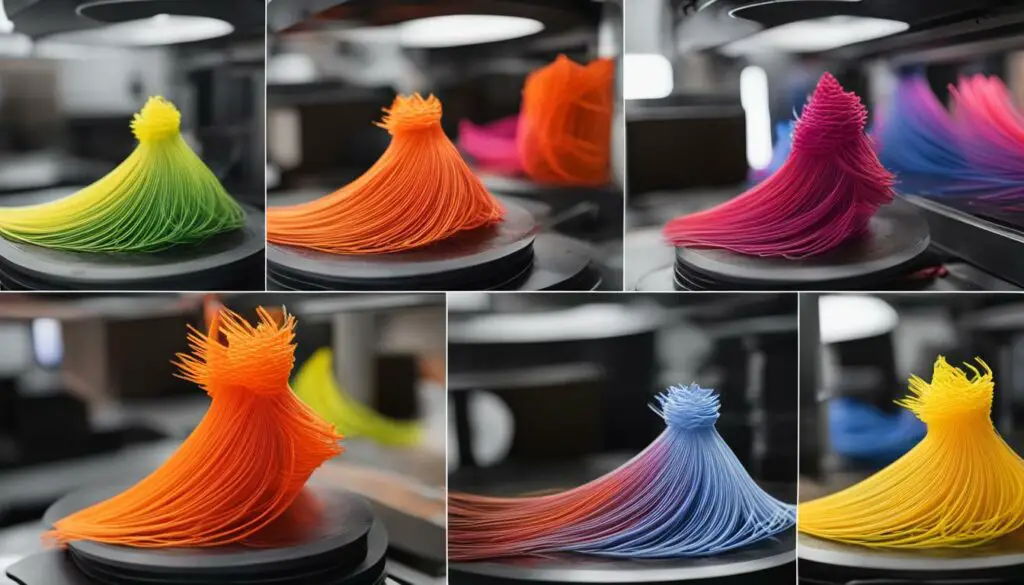
Comparison: Resin 3D Printing vs Filament 3D Printing
Cost Comparison
When it comes to cost, filament 3D printing has a clear advantage over resin 3D printing. Filament printers are generally more affordable, and the cost of filament materials is relatively low compared to resin. Additionally, filament printers tend to use less energy during the printing process, resulting in lower operating costs. However, it’s important to note that resin printers offer higher precision and finer details, which may justify the higher initial and material costs for certain applications.
Quality Comparison
In terms of print quality, resin 3D printing has the upper hand. Resin printers are capable of producing smoother surfaces and finer details due to their high resolution. On the other hand, filament printers often exhibit visible layer lines on the printed object, which can affect the overall aesthetic appeal. If your project requires intricate designs or a high level of detail, resin printing is the way to go.
Ease of Use Comparison
When it comes to ease of use, filament 3D printers are generally more user-friendly. They have a simpler setup process and are easy to operate, making them a popular choice for beginners. Resin printers, on the other hand, require more careful handling and post-processing. They often involve working with toxic chemicals and can be messy and time-consuming to clean up. Therefore, if you prioritize ease of use and convenience, filament printing may be the better option.
Durability Comparison
When it comes to durability, filament prints tend to be stronger and more resistant to impact compared to resin prints. Filament materials, such as ABS or PETG, offer better mechanical properties and can withstand rough handling. Resin prints, on the other hand, are more fragile and can be prone to breaking or cracking. However, it’s worth noting that the specific application and the design of the printed object will ultimately determine its durability requirements, so it’s important to consider the intended use before making a decision.
Overall, the choice between resin 3D printing and filament 3D printing depends on your specific needs and preferences. If cost is a major factor and you can compromise on some details, filament printing is a budget-friendly option. On the other hand, if you prioritize high-quality prints with fine details, resin printing is the way to go. Consider factors like cost, quality, ease of use, durability, and the specific requirements of your project to make an informed decision.
| Factors | Resin 3D Printing | Filament 3D Printing |
|---|---|---|
| Cost | Higher initial and material costs | Lower initial and material costs |
| Quality | Higher resolution and finer details | Visible layer lines |
| Ease of Use | Requires careful handling and post-processing | User-friendly and easy to operate |
| Durability | More fragile | Stronger and more resistant to impact |
Conclusion
When it comes to exploring the world of cool 3D printed things, you have two main options: resin 3D printing and filament 3D printing. Both methods offer unique advantages and considerations, so it’s important to understand the factors to consider when making a choice that aligns with your needs and applications.
Resin 3D printing is known for its high resolution and wide range of materials, allowing you to create intricate and water-resistant prints with unaffected surface quality. However, it does come with drawbacks such as limited printing size, toxic fumes, messy post-processing, and a limited shelf-life for the resin.
On the other hand, filament 3D printing offers versatility in materials, accessibility, larger build volume, and durability. However, it may result in visible layer lines, slower printing speed, warping, and the need for support structures.
Ultimately, there is no inherently superior printing method. Your choice should be based on considerations like cost, quality, ease of use, durability, build volume, print speed, and surface finish. Each method has its own strengths and limitations. It all depends on what you prioritize and the specific requirements of your projects. So, whether you’re interested in creating unique 3D printed gadgets, customized objects, or trendy designs, both resin and filament 3D printing offer cutting-edge and creative solutions to bring your ideas to life.
FAQ
What is resin 3D printing?
Resin 3D printing is a process that uses photopolymer resin to create three-dimensional objects. It typically involves either stereolithography (SLA) or digital light processing (DLP) technology, where a UV light source selectively cures the resin layer by layer to form the desired object.
What is filament 3D printing?
Filament 3D printing, also known as fused deposition modeling (FDM), is a process that uses a thermoplastic filament to build objects layer by layer. The filament is melted and extruded through a nozzle, which moves along predetermined paths to create the desired shape.
What are the advantages of resin 3D printing?
Resin 3D printing offers high resolution, allowing for intricate details and smooth surfaces. It also provides a wide range of materials, including flexible and transparent options, and produces water-resistant prints. Additionally, resin prints have an unaffected surface quality, meaning they require minimal post-processing.
What are the drawbacks of resin 3D printing?
Resin 3D printing has limitations in printing size, with most printers having a smaller build volume compared to filament printers. The process also produces toxic fumes during printing, requiring proper ventilation. Furthermore, resin prints require more post-processing steps, which can be messy and time-consuming. The resin itself also has a limited shelf-life and may need to be replaced regularly.
What are the benefits of filament 3D printing?
Filament 3D printing offers a versatile range of materials, including various types of plastics, composites, and even metal-infused filaments. It is also more accessible and widely used, with a larger build volume available for printing larger objects. Filament prints are generally durable and can withstand more impact.
What are the disadvantages of filament 3D printing?
Filament 3D printing often exhibits visible layer lines on the printed object, requiring additional post-processing to achieve a smoother surface finish. The printing speed is relatively slow compared to resin printing. Filament prints are also prone to warping and may require support structures for certain designs, which can be time-consuming to remove and clean up.
How does the cost compare between resin 3D printing and filament 3D printing?
Resin 3D printing generally has a higher upfront cost, with printers and resin being more expensive compared to filament printers and filaments. However, the cost per print may vary depending on factors such as material usage and size of the object being printed.
How does the quality compare between resin 3D printing and filament 3D printing?
Resin 3D printing typically offers higher resolution and finer details compared to filament printing. Filament prints may have more visible layer lines, although post-processing techniques can be used to improve the surface finish.
Which method is easier to use, resin 3D printing or filament 3D printing?
Filament 3D printing is generally considered easier to use, as it involves fewer steps and has a simpler setup process. Resin 3D printing requires more careful handling of the toxic resin, proper ventilation, and often involves more post-processing steps.
How does the durability compare between resin 3D printing and filament 3D printing?
Filament prints are generally more durable and can withstand more impact compared to resin prints, which tend to be more fragile and prone to breaking under stress.
How does the build volume compare between resin 3D printing and filament 3D printing?
Filament 3D printing offers a larger build volume, making it suitable for printing larger objects or multiple objects simultaneously. Resin 3D printing typically has a smaller build volume, limiting the size of objects that can be printed.
How does the print speed compare between resin 3D printing and filament 3D printing?
Resin 3D printing is generally faster compared to filament printing. The curing process in resin printing allows for quicker layer-by-layer printing, while filament printing tends to be slower due to the need for extrusion and cooling times.
How does the surface finish compare between resin 3D printing and filament 3D printing?
Resin 3D printing produces smoother and more detailed surface finishes compared to filament printing. Filament prints may have visible layer lines that require post-processing techniques to achieve a smoother appearance.
What is the cost difference between resin 3D printing and filament 3D printing?
Resin 3D printing can be more expensive than filament printing in terms of printer cost and material cost. However, the actual cost per print can vary depending on factors such as size and material usage.
How does the material durability compare between resin 3D printing and filament 3D printing?
Filament prints are generally more durable and can withstand more impact compared to resin prints, which are more fragile and prone to breaking under stress. The choice of material can also affect the durability of the printed objects.
What factors should I consider when choosing between resin 3D printing and filament 3D printing?
When choosing between resin and filament printing, consider factors such as cost, desired quality, ease of use, durability requirements, desired build volume, print speed preferences, and desired surface finish. These factors will help determine which method is best suited for your specific needs and applications.
Is there a superior method between resin 3D printing and filament 3D printing?
There is no inherently superior method between resin and filament 3D printing. Each method has its own advantages and disadvantages, and the choice depends on the specific requirements of the project or application.
What is the overall comparison between resin 3D printing and filament 3D printing?
Resin 3D printing offers high resolution and detailed prints, but it has limitations in printing size, requires proper ventilation, and involves more post-processing. Filament 3D printing offers versatility, accessibility, and larger build volumes, but it may have visible layer lines and slower printing speeds. Ultimately, the choice depends on the specific needs and preferences of the user.
What are your final thoughts on cool 3D printed things and the possibilities they offer?
Cool 3D printed things offer endless possibilities for creativity, innovation, and customization. From unique gadgets to customized objects, 3D printing opens up a world of design possibilities. With advancements in technology and materials, the range of cool 3D printed things will continue to expand, making it an exciting field for those interested in cutting-edge designs and trendy accessories.

